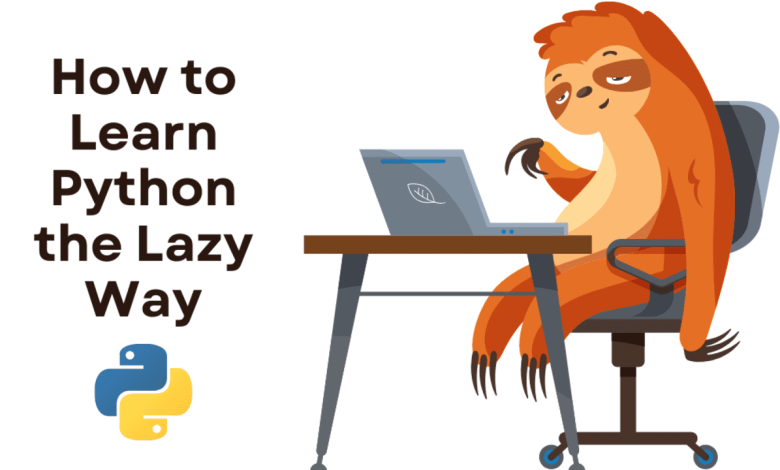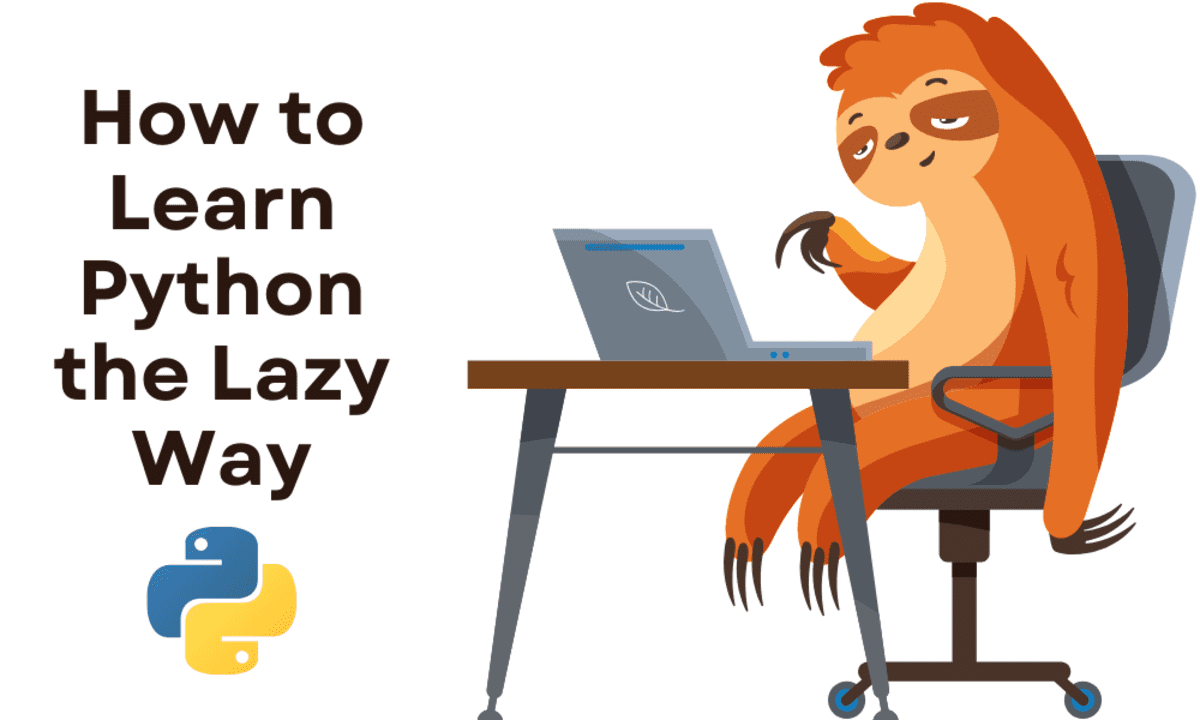How to Learn Python the Lazy Way


Image by Author
You might be thinking, why do I need to learn Python if I can just ask ChatGPT to generate code for me or use AI code editors to build an entire project? The thing is, ChatGPT is good at generating code for simple projects, but it struggles when you want to achieve something new or build a complex project with multiple microservices. Building small toy projects won’t get you paid. The real opportunities lie where AI models struggle, and they will continue to struggle because these models are trained on old coding datasets. For solving new problems, you need software engineers and developers.
In this blog, we will learn how anyone, especially the lazy and unfocused people, can learn Python in a short time with limited effort. Just follow the 7 tips I mentioned, and that’s it.
Our Top 3 Partner Recommendations
![]()
![]() 1. Best VPN for Engineers – 3 Months Free – Stay secure online with a free trial
1. Best VPN for Engineers – 3 Months Free – Stay secure online with a free trial
![]()
![]() 2. Best Project Management Tool for Tech Teams – Boost team efficiency today
2. Best Project Management Tool for Tech Teams – Boost team efficiency today
![]()
![]() 4. Best Password Management for Tech Teams – zero-trust and zero-knowledge security
4. Best Password Management for Tech Teams – zero-trust and zero-knowledge security
1. Use Interactive Learning Platforms
Sign up for a paid, interactive course for programming and learn programming as if it were a game. You can earn points by completing quizzes, examples, and projects. When I started learning Python, I had no idea how to set up REPL or anything. I was clueless. I joined DataCamp to learn Python, and I also enrolled in Codecademy to learn Python for data analysis. Both platforms were amazing at teaching me the fundamentals of Python. They forced me to practice instead of just watching videos. This means that after watching the video tutorial, you must complete coding exercises to move to the next stage of the course. You will learn about syntax, how to write functions, and many other basics of programming.
2. Watch YouTube Videos
YouTube tutorials are not interactive, but they can help you understand how Python programmers use different tools and packages to build a project. Watching the videos won’t exactly help you learn, it’s more like watching a movie. However, you will remember a few things, and those will motivate you to believe that you can also build your own application.
3. Start with Simple Projects
Start with a very small project, like creating your first CLI game or generating data visualizations. After learning the basics, jump right into a bigger project. This is where you will learn to troubleshoot and search on Google how to build and resolve certain issues. Don’t worry if things get frustrating; you will learn things with time. When I get frustrated, I just pick another toy project and start working on it. The main goal is to keep learning and keep building.
4. Focus on Key Concepts
Python offers a wealth of features that many developers are either unaware of or rarely use. By exploring capabilities such as Object-Oriented Programming (OOP), exception handling, file processing, garbage collection, data classes, typed dictionaries, decorators, and logging, you can significantly streamline your coding process. Embracing these features can simplify your workflow and enable you to achieve the same results with fewer lines of code, ultimately impressing your colleagues and superiors.
5. Join Online Communities
Join Reddit, LinkedIn, Facebook, Slack, and Discord groups related to Python to stay updated on the latest projects, Python packages, and discussions within the community. These groups can also be a great resource for finding job opportunities. You can ask questions about any issues you face and seek help from the Python community. Additionally, consider creating a group where you and your team members can work on coding projects via Discord calls. This collaborative approach can serve as motivation to improve your coding skills.
6. Automate Boring Stuff
Every lazy person wants to automate their life, and what if I told you that you can automate your workflow with Python? Yes, it is possible if you use the right Python packages and learn a few things about your workplace tools.
For example, I have automated my work. The Python script takes the title and all the information about the blog from a Google spreadsheet, then cleans the HTML file for the blog, and finally creates a new HTML file with all the metadata and information that I can simply paste on WordPress to publish it. With just a few lines of code, I have automated 60% of my work.
7. Practice by Building
Once you have worked on a small toy project and built a small portfolio, it is time to work on a complex and new project. You may need to build a server, a project, or a software. I highly recommend you to host your project on GitHub and learn about the Git tool. This will help you work with the open-source community and gain the essential experience that recruiters are looking for. Start a complex project, invite other community members to contribute, and that’s it. With time, you will start to understand how to write production-ready code.
Final Thoughts
Python is an essential language to learn for both technical and non-technical individuals. By learning the basics, you can achieve amazing results and even get paid for your work. To get started, I recommend building a portfolio on GitHub where you can create and showcase your projects. Share your journey on LinkedIn and write about your experiences on Medium or other blogging platforms. In no time, you will fall in love with this language and thank me for showing you the easy and efficient way to learn it.
Abid Ali Awan (@1abidaliawan) is a certified data scientist professional who loves building machine learning models. Currently, he is focusing on content creation and writing technical blogs on machine learning and data science technologies. Abid holds a Master’s degree in technology management and a bachelor’s degree in telecommunication engineering. His vision is to build an AI product using a graph neural network for students struggling with mental illness.



